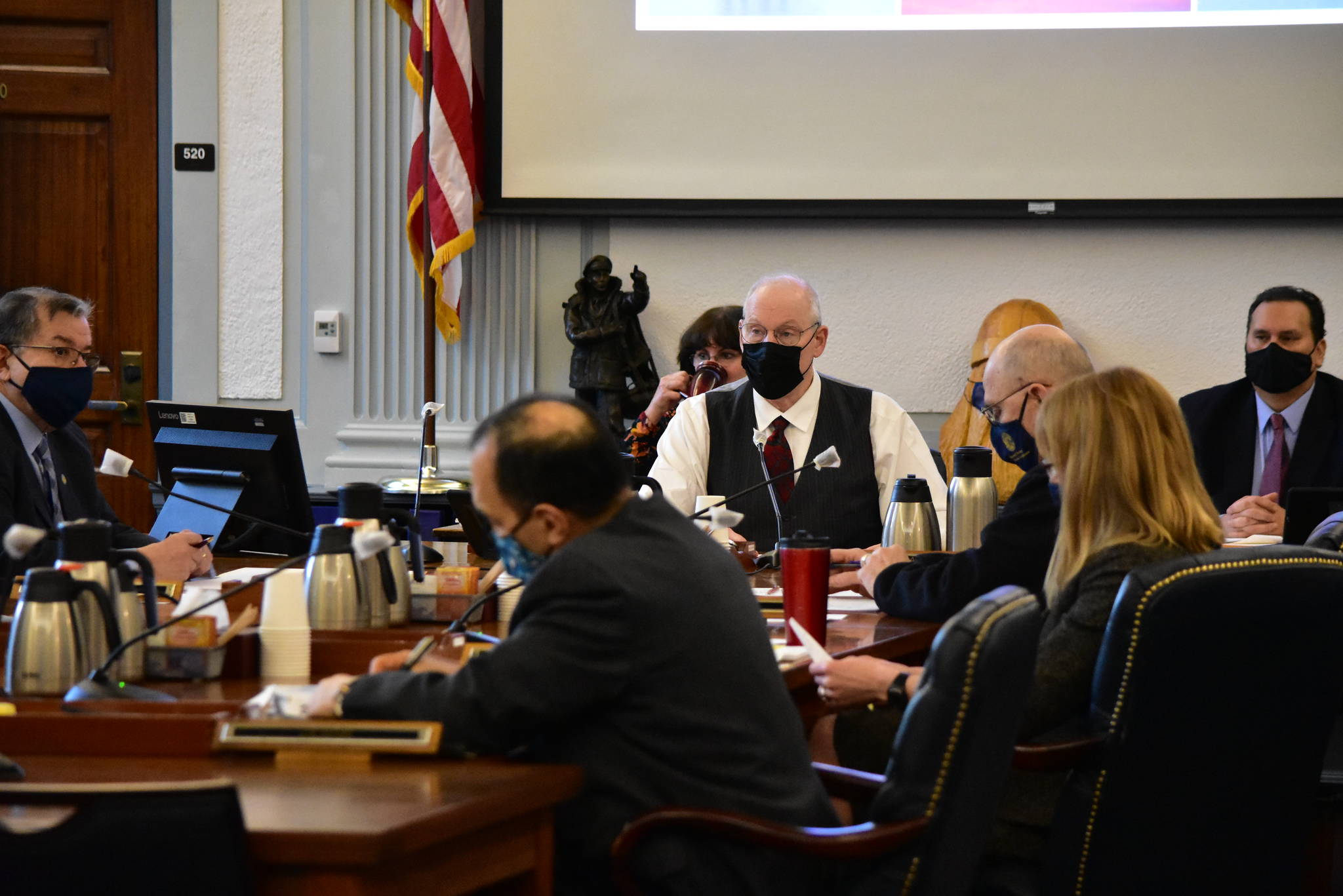Gov. Mike Dunleavy’s supplemental budget proposal totals nearly $1.4 billion — about $1.2 billion of which would go toward additional Alaska Permanent Fund dividend payments.
At a Senate Finance Committee meeting Monday morning, committee chair Sen. Bert Stedman, R-Sitka, called the proposal “a doozy” and asked OMB Director Neil Steininger if it was the largest in the history of the state or the territory. Steininger said he would have to check but noted the majority of the budget went to PFD payments.
“The inclusion of the completion of last year’s dividend is the significant item here,” Steininger said at the meeting.
[Dunleavy proposes budget for ‘unprecedented’ times]
Supplemental budgets typically cover the costs incurred by the state while the Legislature is out of session and paid for out of money set aside by lawmakers. In past years, supplemental budgets have helped cover costs related to wildfire or earthquake damage.
Last year’s supplemental budget was $265 million. But the coronavirus pandemic shocked the economy and forced the Legislature to convene early last year even as the state set up its emergency response to the virus. Addressing the public during the meeting, Stedman said lawmakers had considerable work before them in sorting out the various expenditures.
“These are large supplemental numbers, but there are a lot of anomalies in here,” Stedman said. “We’re going to silo them into the proper fiscal year, and then try to factor out what are the anomalies and other issues so we can put a finer point on the structural deficit.”
The governor’s supplemental budget is spread out across four different pieces of legislation breaking down the requests into three key areas. Senate Bill 48 includes high-priority projects and completion of the Fiscal Year 2021 capital budget, according to OMB. Senate bills 49 and 50 include technical supplemental items primarily related to changes in the FY22 budget and Senate Bill 68 is the normal request for emergent needs, according to Steininger’s presentation.
[Lawmakers cautious of governor’s budget]
Steininger said several departments had fallen short on revenue due to various complications from the pandemic such as not being able to offer in-person services. The Department of Education and Early Development saw a drop in enrollment when schools went to online learning, he said, and certain scheduled fee increases were suspended.
The governor is proposing an additional PFD of roughly $1,900 per person, Steininger said. In order to do that the state would have to make a second draw from the Earnings Reserve Account of the Permanent Fund. By law, the state is only allowed to use 5% of the annual earnings on the ERA. The governor is proposing a second draw for the 2021 fiscal year, something he’s defended as necessary to stimulate the state’s economy but lawmakers on both sides of the aisle have been wary of the plan.
“We’ll obviously have some discussion in much more detail,” Stedman said. “Clearly, there’s some concern from the Permanent Fund on the impact on the earnings reserve.”
Contact reporter Peter Segall at psegall@juneauempire.com. Follow him on Twitter at @SegallJnuEmpire.

